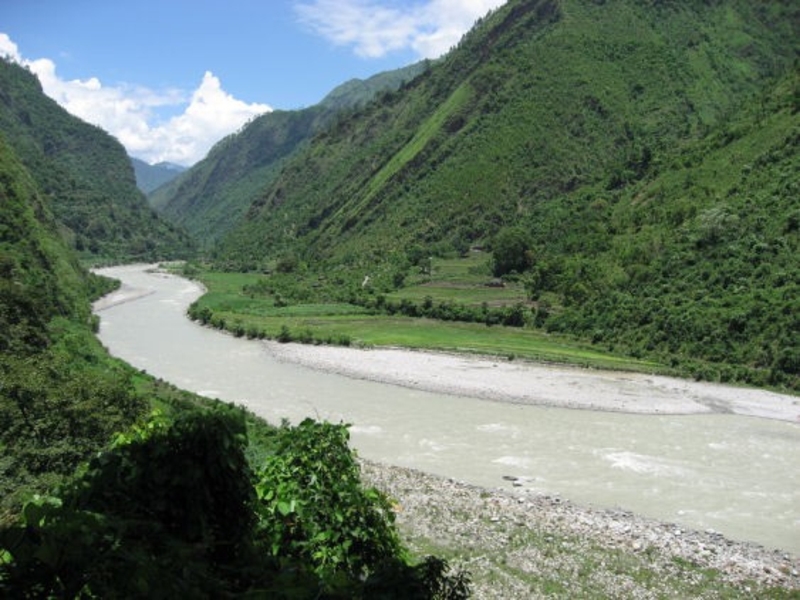The 750MW West Seti Hydropower Project is planned to be developed as a 750MW hydroelectric storage project on the Seti River in the far Western Development Region (FWDR) of Nepal.
Proposed by West Seti Hydro Limited (WSHL), the project will have an average annual energy generation of 3,636GWh. It will be developed as per the Public-Private partnership (PPP) model.
An Environmental Impact Assessment (EIA) of the hydroelectric project commenced in 1997.
The EIA report was approved by the Ministry of Population and Environment of the Government of Nepal in 2000.
Project Gallery
The report included an Environmental Management Plan (EMP), a Resettlement Action Plan (RAP), and an assessment of the environmental and social impacts related to the proposed transmission line.
The EIA was updated in line with the requirements and guidelines of the Asian Development Bank (ADB).
The EIA report was prepared by WSHL for the Asian Development Bank and published in October 2008.
According to EIA, the construction of the hydroelectric project is proposed to occur over a period of 5.5 years.
The Investment Board Nepal (IBN) scrapped the construction agreement with the Chinese company, China Three Gorges Corporation, awarded in 2012
In the 51st meeting, the IBN decided to handover the construction of the project to the National Hydro Electric Power Corporation Private Limited (NHPC), an Indian company.
The project will supply electricity to India under a Power Purchase Agreement (PPA) with Power Trade Corporation India Ltd initiated in 2003 by the Government of Nepal.
Location and Site Details
The West Seti Hydropower Project will be located in FWDR, Nepal, 82km upstream of the confluence of Seti and Karnali rivers, thus, forming part of the Ganges basin
The project sites are situated at elevations from 550-920m above sea level in the Middle Mountains.
The project’s power station lies 63km upstream at the confluence of the Seti River and the Karnali River.
The dam’s site lies further 19.2km upstream.
The project area lies 82km north and 44km due east of Nepal’s southern and western borders with India.
West Seti can be accessed by road via the Mahakali Rajmarg National Highway 14 (H14) and the Seti Rajmarg National Highway 15 (H15).
West Seti Hydropower Project Details
The components of the West Seti Hydropower Project will include storage dam and reservoir, tunnels, re-regulation weir, access roads, workforce camps, work areas, and office buildings.
A concrete-faced storage dam of 195m height and twin 12.8m diameter diversion tunnels with a concrete-lined ungated chute spillway will be constructed on the Seti River.
The dam will lie immediately downstream of Seti River’s confluence with the Chama Gad.
The reservoir of the project will extend 25km along the Seti River and 28km, in total, along five tributaries, Chama Gad, Dhung Gad, Saili Gad, Nawaghar Gad, and Kalanga Gad.
The reservoir will have full supply level pf EL 1,284m.
Approximately 2,202 hectares (ha) of land will be required for the reservoir, dam site, and spillway.
A 10m diameter tunnel and 6.7km long headrace will be constructed, leading to a vertical pressure shaft (167m deep) and pressure tunnel (365m long).
The pressure tunnel will branch into five 3m diameter steel-line pressure conduits, one for each turbine-generator unit.
A tailrace tunnel, 620m long, will be constructed to discharge the flow from the power station back into the Seti Reservoir.
A re-regulation weir, covering 62ha at FSL, is proposed 6km downstream of the tailrace outlet.
It will regulate river flow and reduce rapid rise or fall of river level created by power station releases.
Rectangular outlets at the river level will discharge regulated discharges.
They are fitted with a slide gate which can be closed to regulate lower flows. The weir will include a crest spillway for discharging power station releases when the storage is full.
Five access roads of varying length are proposed to be constructed for access to the project site.
Power Distribution and Supply
The power distribution infrastructure will include a power station and a transmission line.
An underground power station, some 19km downstream of the dam wall, will be located at Bausi Gara.
It will house a machine hall, transformer hall, switching station, mechanical and electrical plant, and equipment to generate electrical power.
The station will also house the plant and equipment for converting the generated power to transmission line voltage and surface transmission line landing structure via high voltage cables.
The power station’s platform will include a cable yard, a workshop, warehouses, and administrative buildings as associated surface facilities.
Above the platform, a water treatment plant and a pump house will be located on the hill side with a headrace surge and access shaft portals.
A double circuit transmission line of 400kV will transfer power to the Nepal-India border near Mahendranagar, Kanchanpur District.
The proposed route will be 132.5km long in Nepal, connecting Talkot switchyard in Doti District, running across Dadelhura, Kailali, and Kanchanpur Districts, to the Nepal-India border at Mahendranagar.
Contractor of the West Seti Hydropower Project
National Hydroelectric Power Corporation (NHPC) has been selected by the IBN for the Detailed Project Report (DPR) of the project. The construction of the West Seti Hydropower Project will be conducted by NHPC.



